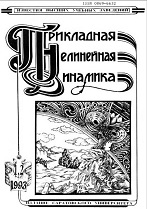|
This article is cited in 1 scientific paper (total in 1 paper)
NONLINEAR WAVES. SOLITONS. AUTOWAVES. SELF-ORGANIZATION
Influence of additive noise on chimera and solitary states in neural networks
A. D. Ryabchenko, E. V. Rybalova, G. I. Strelkova
Saratov State University, Russia
Abstract:
The purpose of this work is to study numerically the influence of additive white Gaussian noise on the dynamics of a network of nonlocally coupled neuron models which are represented by FitzHugh-Nagumo oscillators. Depending on coupling parameters between the individual elements this network can demonstrate various spatio-temporal structures, such as chimera states, solitary states and regimes of their coexistence (combined structures). These patterns exhibit different responses against additive noise influences. Methods. The network dynamics is explored by calculating and plotting snapshots (instantaneous spatial distributions of the coordinate values at a fixed time), space-time diagrams, projections of multidimensional attractors, mean phase velocity profiles, and spatial distributions (profiles) of cross-correlation coefficient values. We also evaluate the cross-correlation coefficient averaged over the network, the mean number of solitary nodes and the probability of settling spatio-temporal structures in the neuronal network in the presence of additive noise. Results. It has been shown that additive noise can decrease the probability of settling regimes of solitary states and combined structures, while the probability of observing chimera states arises up to 100%. In the noisy network of FitzHugh-Nagumo oscillators exhibiting the regime of solitary states, increasing the noise intensity leads, in general case, to a decrease of the mean number of solitary nodes and the interval of coupling parameter values within which the solitary states are observed. However, there is a finite region in the coupling parameter plane, inside which the number of solitary nodes can grow in the presence of additive noise. Conclusion. We have studied the impact of additive noise on the probability of observing chimera states, solitary states and combined structures, which coexist in the multistability region, in the network of nonlocally coupled FitzHugh-Nagumo neuron models. It has been established that chimera states represent more stable and dominating structures among the other patterns coexisting in the studied network. At the same time, the probability of settling regimes of solitary states only, the region of their existence in the coupling parameter plane and the number of solitary nodes generally decrease when the noise intensity increases.
Keywords:
nonlocal coupling, additive noise, chimera state, solitary state, FitzHugh-Nagumo model
Received: 15.08.2023
Citation:
A. D. Ryabchenko, E. V. Rybalova, G. I. Strelkova, “Influence of additive noise on chimera and solitary states in neural networks”, Izvestiya VUZ. Applied Nonlinear Dynamics, 32:1 (2024), 121–140
Linking options:
https://www.mathnet.ru/eng/ivp579 https://www.mathnet.ru/eng/ivp/v32/i1/p121
|

| Statistics & downloads: |
| Abstract page: | 48 | | Full-text PDF : | 47 | | References: | 21 |
|




 Contact us:
Contact us: Terms of Use
Terms of Use
 Registration to the website
Registration to the website Logotypes
Logotypes







 Citation in format
Citation in format 
